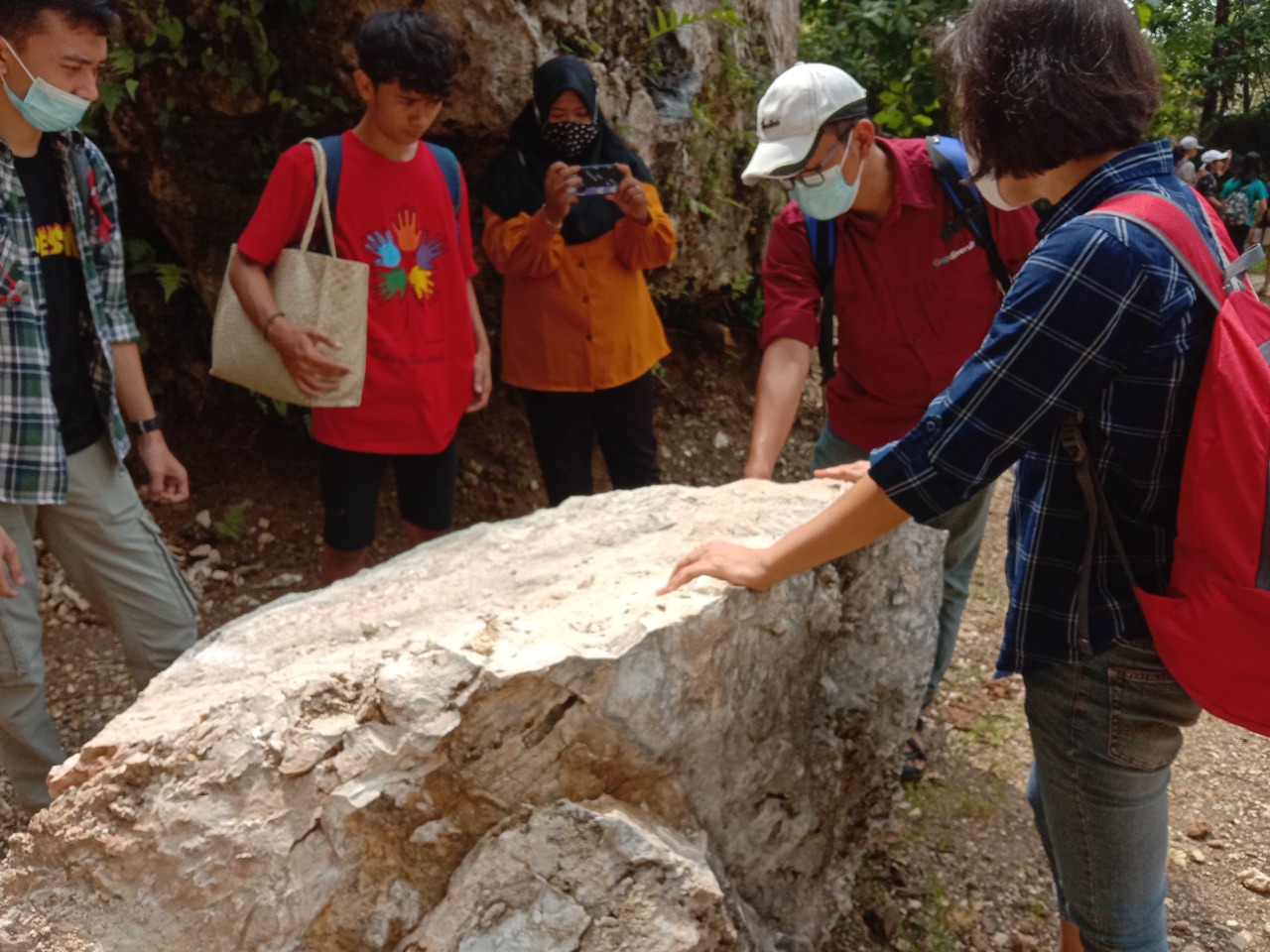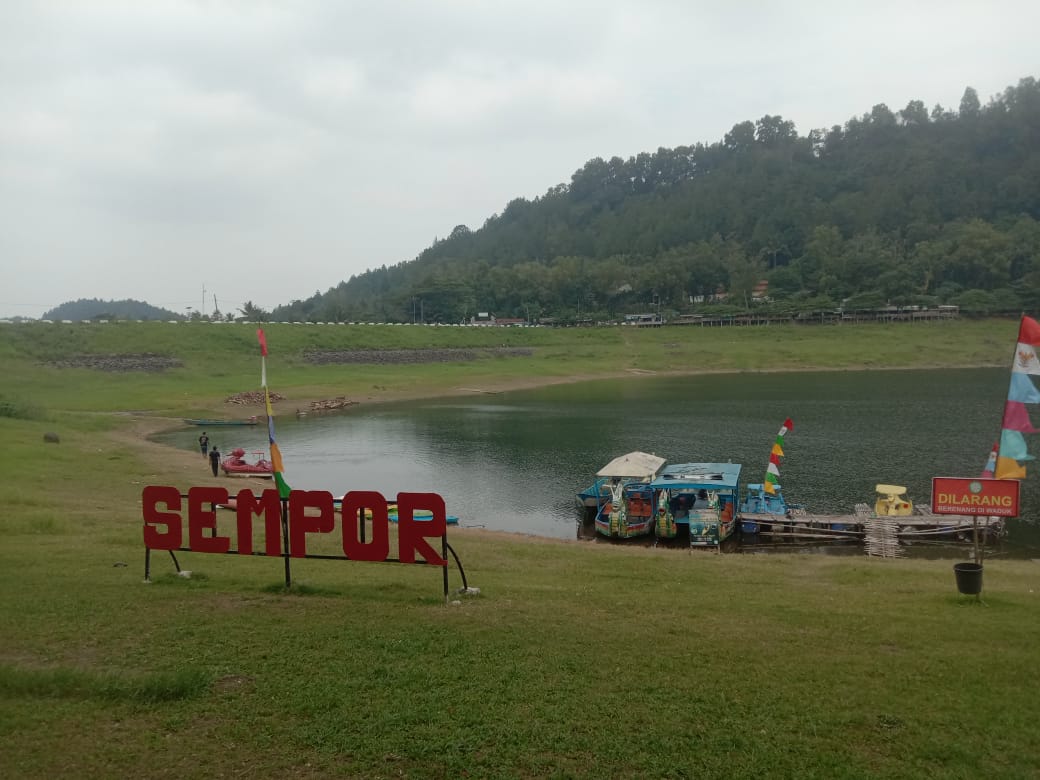Ecotourism Pillars Enforcement to Geotourism Destination in Slamet and Serayu Mountainous Areas, Central Java Province
Abstract
Nature based tourism, including geotourism, can have the status of ecotourism if they are able to enforce the seven pillars namely: 1) the ecological pillar, 2) the economic pillar, 3) the socio-cultural pillar, 4) the satisfaction pillar, 5) experience pillar, 6) memory pillar, and 7) education pillar. This study aims to analyse the perceptions of tourists towards the enforcement of the seven pillars of ecotourism in geotourism destinations. The study was conducted through a survey using a closed-ended questionnaire with a total number of respondents is 400 people. Data analysis was carried out using comparative quantitative and correlation quantitative methods. The results showed that there was still a “gap” between the pillars of sustainable development and the pillars of the basic needs of tourists. The results of the correlation test showed that the elements of the seven pillars of ecotourism had interrelationship each other. It is necessary to modify the form of geotourism implementation by increasing the aspects of guiding/interpreting for tourists and intensifying the involvement of tourists in all tourism activities. The regional approach are also applied to the development of geotourism so that it is more optimal, integrated and efficient in the use of resources.
References
Avenzora, R. (2008b). Ecotourism: Evaluation of the concept. In Ecotourism: Theory and Practice (pp. 1–17). BRR NAD-Nias.
Avenzora, R. (2013). Ecotourism: Theory and implications. In Ecotourism Development in Production Forest Areas (pp. 61–95). IPB University.
Avenzora, R. (2016, August-October). Pembangunan ekowisata Indonesia: Potensi dan kendala. Forest Digest. https://www.forestdigest.com/detail/41/pembangunan-ekowisata-indonesia-potensi-dan-kendala
Avenzora, R. (2018). Pengembangan pariwisata alam nasional di kawasan konservasi. Bogor: Program Studi Manajemen Ekowisata dan Jasa Lingkungan.
Avenzora, R. (2020, September 11). Optimasi kearifan lokal dan lingkungan Minangkabau menuju keridhaan Ilahi [Webinar]. Dinas Kebudayaan Provinsi Sumatera Barat. https://www.youtube.com/watch?v=in-DW8NttIs
Basuni, S. (2001). Ecotourism, conservation management and regional autonomy. Media Konservasi, 7(2), 47–53.
Boley, B. B., & Green, G. T. (2016). Ecotourism and natural resource conservation: The potential for a sustainable symbiotic relationship. Journal of Ecotourism, 15(1), 36–50. https://doi.org/10.1080/14724049.2015.1094080
Buckley, R. (2003). Environmental inputs and outputs in ecotourism: Geotourism with a positive triple bottom line? Journal of Ecotourism, 2(1), 76–82. https://doi.org/10.1080/14724040308668135
Cater, E. (2006). Ecotourism as a Western construct. Journal of Ecotourism, 5(1–2), 23–39. https://doi.org/10.1080/14724040608668445
Chen, C. F., & Chen, F. S. (2010). Experience quality, perceived value, satisfaction and behavioral intentions for heritage tourists. Tourism Management, 31(1), 29–35. https://doi.org/10.1016/j.tourman.2009.02.008
Damanik, J. (2013). Indonesian tourism: Opportunities and challenges. Yogyakarta: Pustaka Pelajar.
Das, M., & Chatterjee, B. (2015). Ecotourism: A panacea or a predicament? Tourism Management Perspectives, 14, 3–16. https://doi.org/10.1016/j.tmp.2015.01.002
Diamantis, D. (1999). The concept of ecotourism: Evolution and trends. Current Issues in Tourism, 2(2–3), 93–122. https://doi.org/10.1080/13683509908667847
Dowling, R. K. (2000). Developing ecotourism into the Millennium National Ecotourism Conference 1998. International Journal of Tourism Research, 2, 203–208.
Dowling, R. K. (2011). Geotourism’s global growth. Geoheritage, 3(1), 1–13. https://doi.org/10.1007/s12371-010-0024-7
Dowling, R. K. (2014). Global geotourism – an emerging form of sustainable tourism. Czech Journal of Tourism, 2(2), 59–79. https://doi.org/10.2478/cjot-2013-0004
Fennell, D. A. (2002). Ecotourism programs planning. Ontario: CABI Publishing.
Fennell, D. A. (2015). Ecotourism (4th ed.). London: Routledge.
Fung, T., & Wong, F. K. K. (2007). Ecotourism planning using multiple criteria evaluation with GIS. Geocarto International, 22(2), 87–105. https://doi.org/10.1080/10106040701207332
Goldman, T. L., Chen, W. L. J., & Larsen, D. L. (2001). Clicking the icon: Exploring the meanings visitors attach to three national capital memorials. Journal of Interpretation, 6(7), 3–30.
Hose, T. A. (2012). 3G’s for modern geotourism. Geoheritage, 4(1–2), 7–24. https://doi.org/10.1007/s12371-011-0052-y
Hose, T. A., & Vasiljević, D. A. (2012). Defining the nature and purpose of modern geotourism with particular reference to the United Kingdom and South-East Europe. Geoheritage, 4(1–2), 25–43. https://doi.org/10.1007/s12371-011-0050-0
Kim, A. K., & Brown, G. (2012). Understanding the relationships between perceived travel experiences, overall satisfaction, and destination loyalty. Anatolia, 23(3), 328–347. https://doi.org/10.1080/13032917.2012.696272
Kozak, M., & Rimmington, M. (2000). Tourist satisfaction with Mallorca, Spain, as an off-season holiday destination. Journal of Travel Research, 38(3), 260–269. https://doi.org/10.1177/004728750003800308
Mutanga, C. N., Vengesayi, S., Chikuta, O., Muboko, N., & Gandiwa, E. (2017). Travel motivation and tourist satisfaction with wildlife tourism experiences in Gonarezhou and Matusadona National Parks, Zimbabwe. Journal of Outdoor Recreation and Tourism, 20, 1–18. https://doi.org/10.1016/j.jort.2017.08.001
Newsome, D., & Dowling, R. K. (2006). The scope and nature of geotourism. In Geotourism: Sustainability, Impacts and Management (pp. 3–25). Elsevier Butterworth-Heinemann.
Newsome, D., Dowling, R., & Leung, Y. F. (2012). The nature and management of geotourism: A case study of two established iconic geotourism destinations. Tourism Management Perspectives, 2–3, 19–27. https://doi.org/10.1016/j.tmp.2011.12.009
Pitana, I. G., & Gayatri, P. G. (2005). Tourism sociology. Yogyakarta: ANDI.
Sangpikul, A. (2018). The effects of travel experience dimensions on tourist satisfaction and destination loyalty: The case of an island destination. International Journal of Culture, Tourism and Hospitality Research, 1–15.
Sirakaya, E., Sasidharan, V., & Sonmez, S. (1999). Redefining ecotourism: The need for a supply-side view. Journal of Travel Research, 38(2), 168–172. https://doi.org/10.1177/004728759903800210
[TIES] The International Ecotourism Society. (2015). What is ecotourism? https://ecotourism.org/what-is-ecotourism/
Wearing, S., & Neil, J. (2009). Ecotourism: Impacts, potentials and possibilities (2nd ed.). Oxford: Elsevier Butterworth-Heinemann.
Weaver, D. B. (2005). Comprehensive and minimalist dimensions of ecotourism. Annals of Tourism Research, 32(2), 439–455. https://doi.org/10.1016/j.annals.2004.08.003
Yoon, Y., & Uysal, M. (2005). An examination of the effects of motivation and satisfaction on destination loyalty: a structural model. Tourism Management, 26(1), 45–56. https://doi.org/10.1016/j.tourman.2003.08.016
Authors

This work is licensed under a Creative Commons Attribution 4.0 International License.
Jurnal Manajemen Hutan Tropika is an open access journal which means that all contents is freely available without charge to the user or his/her institution. Users are allowed to read, download, copy, distribute, print, search, or link to the full texts of the articles in this journal without asking prior permission from the publisher or the author. This is in accordance with the Budapest Open Access Initiative (BOAI) definition of open access.






